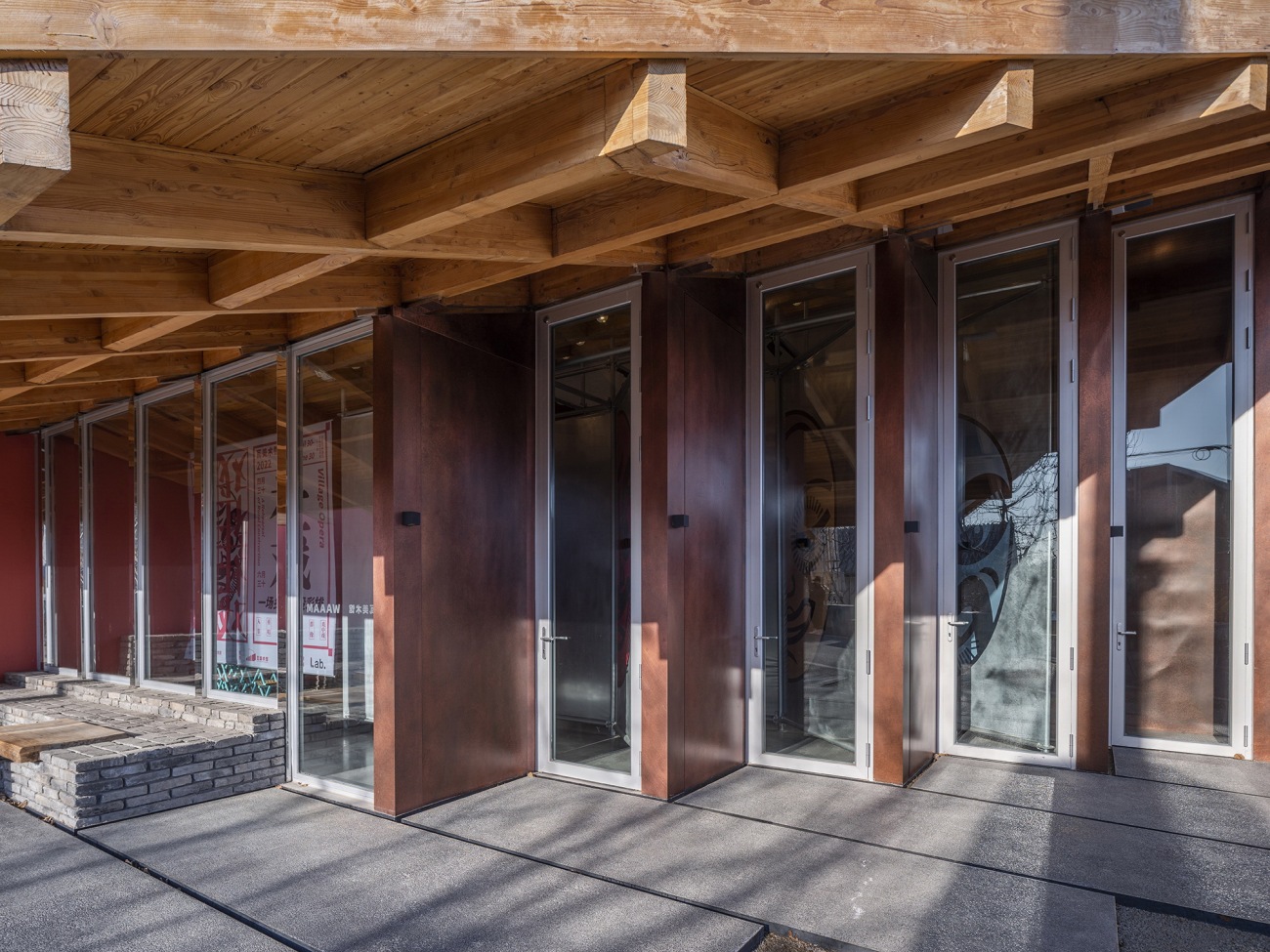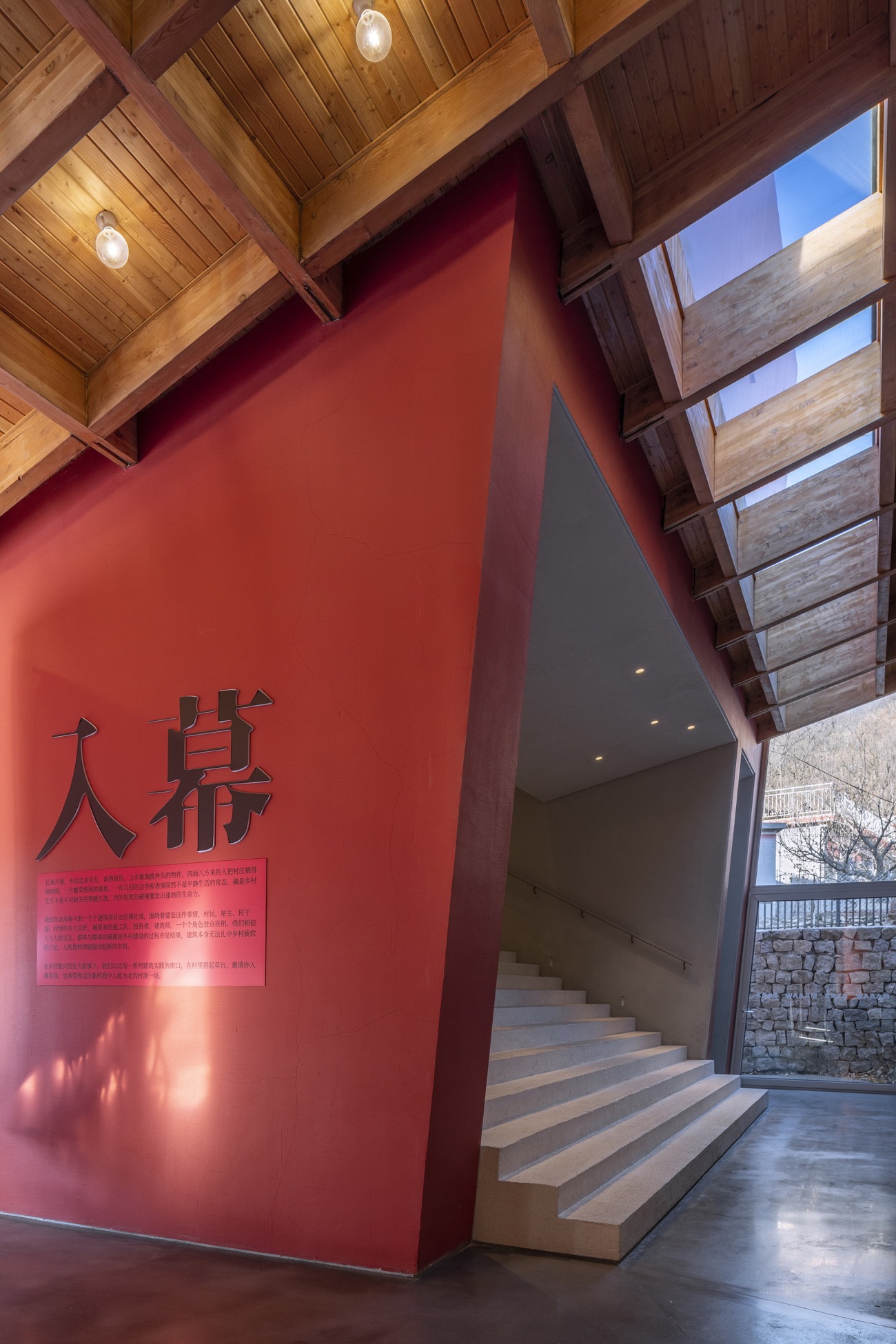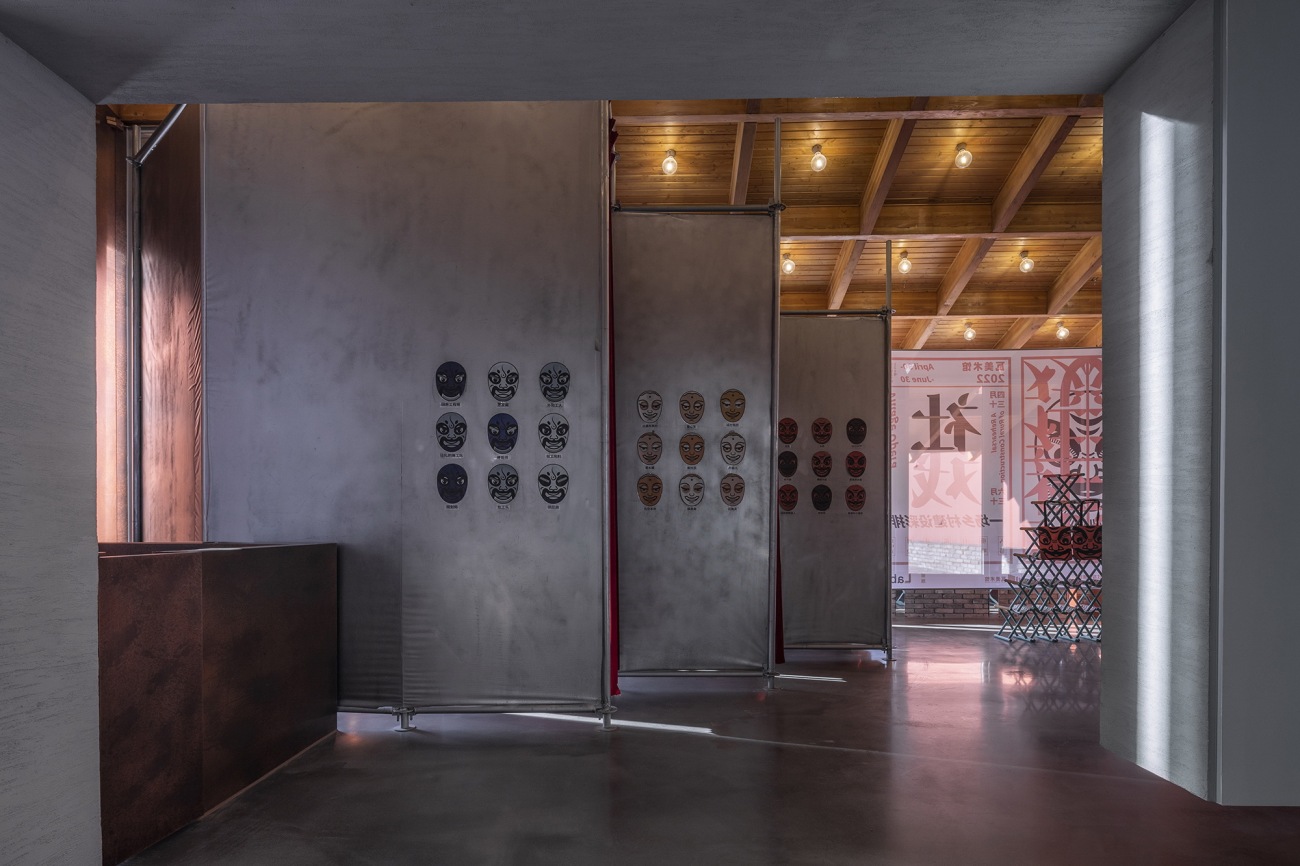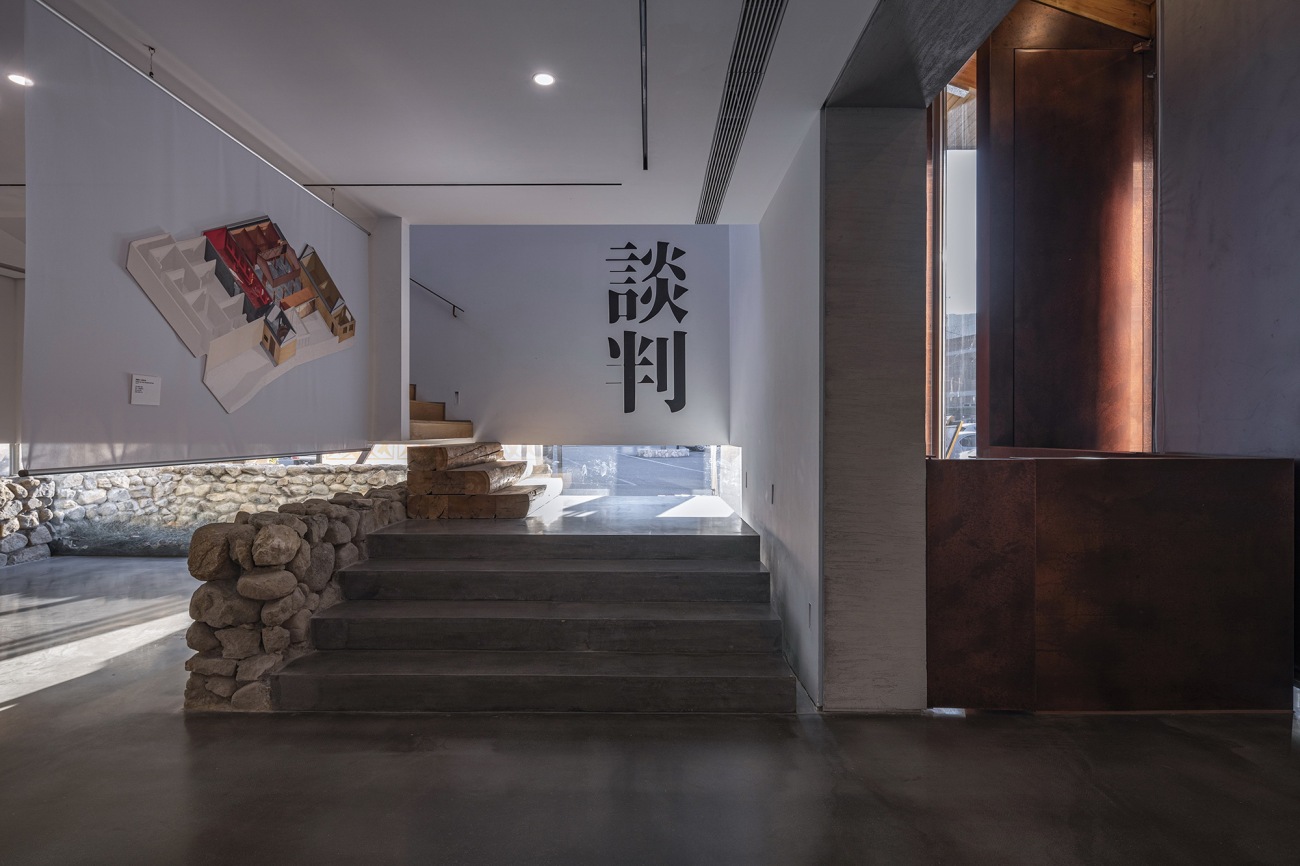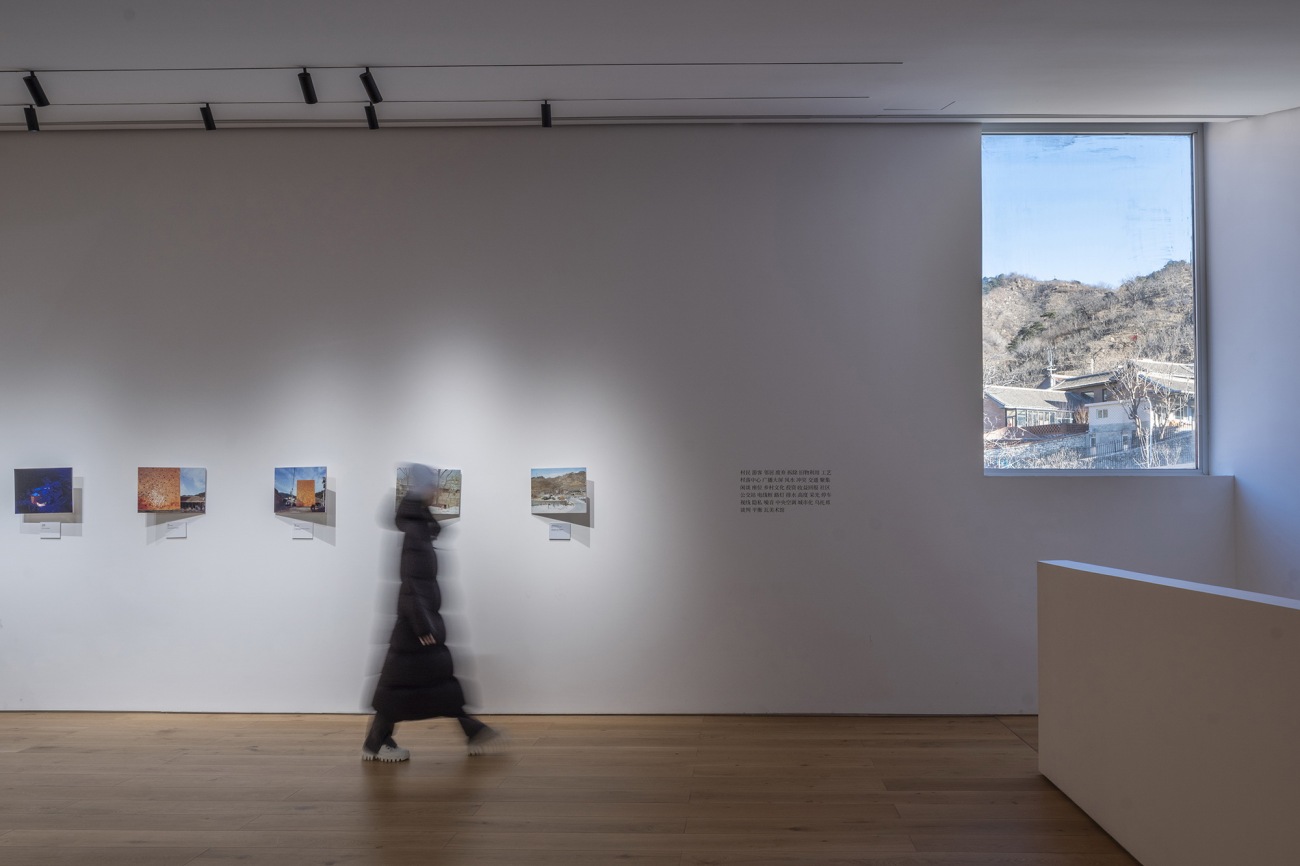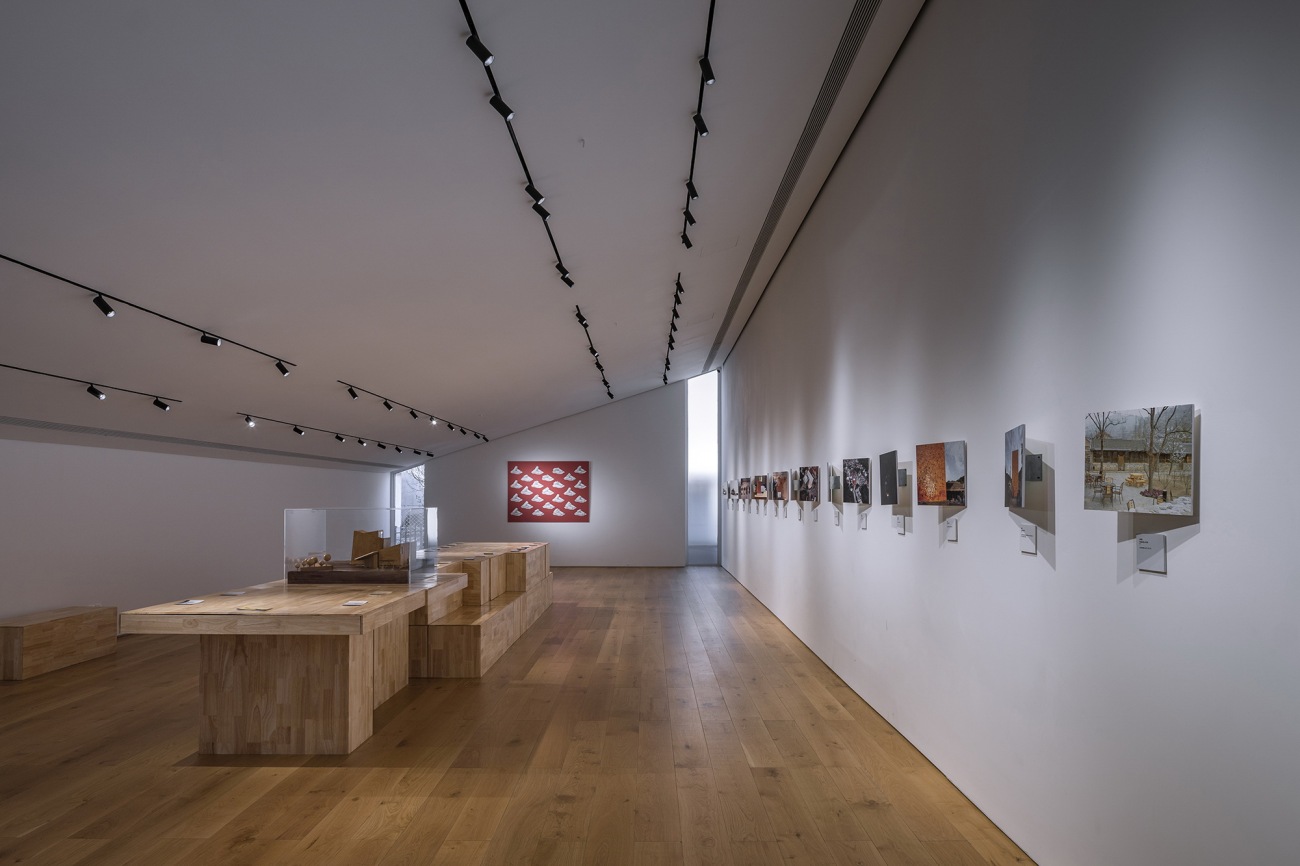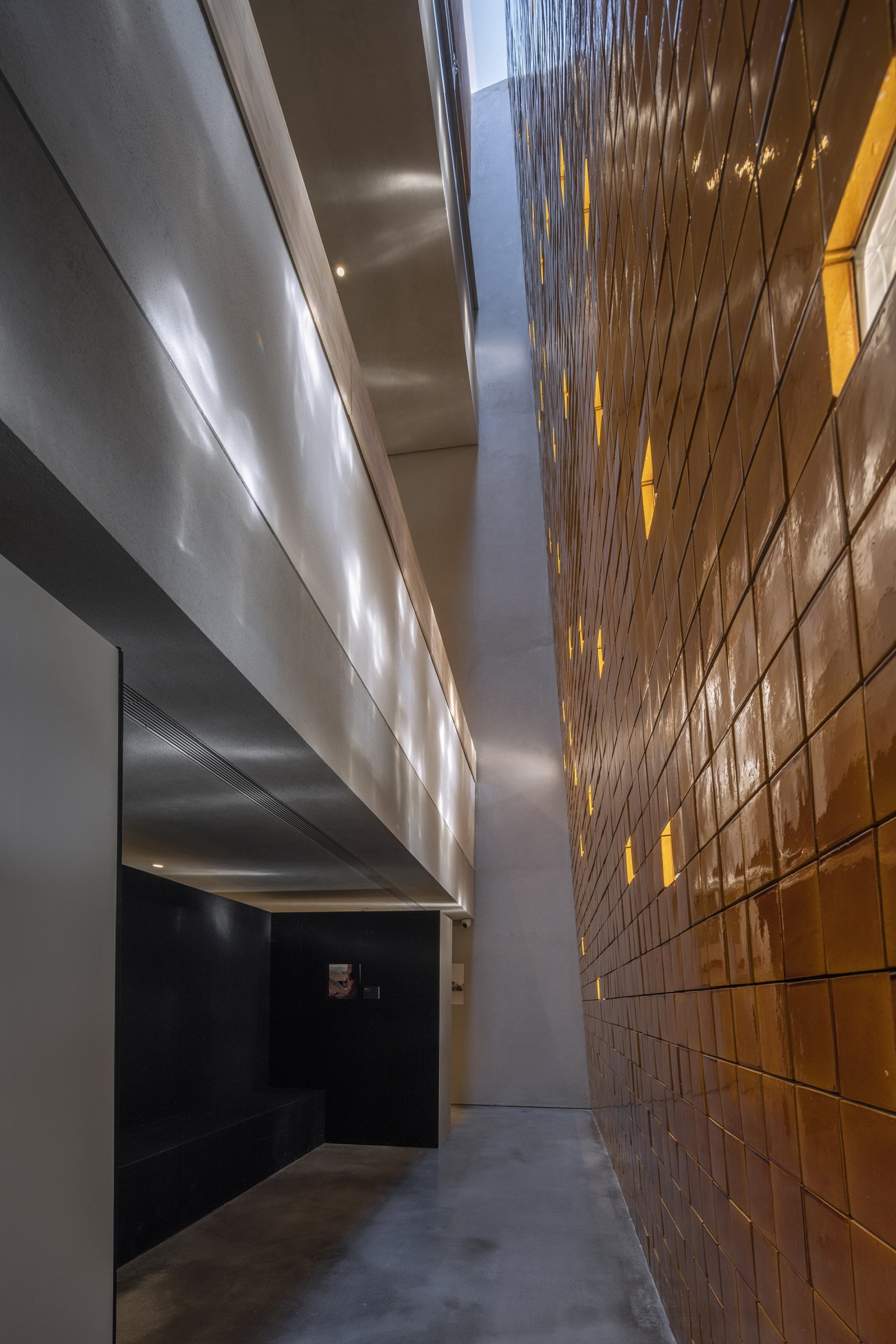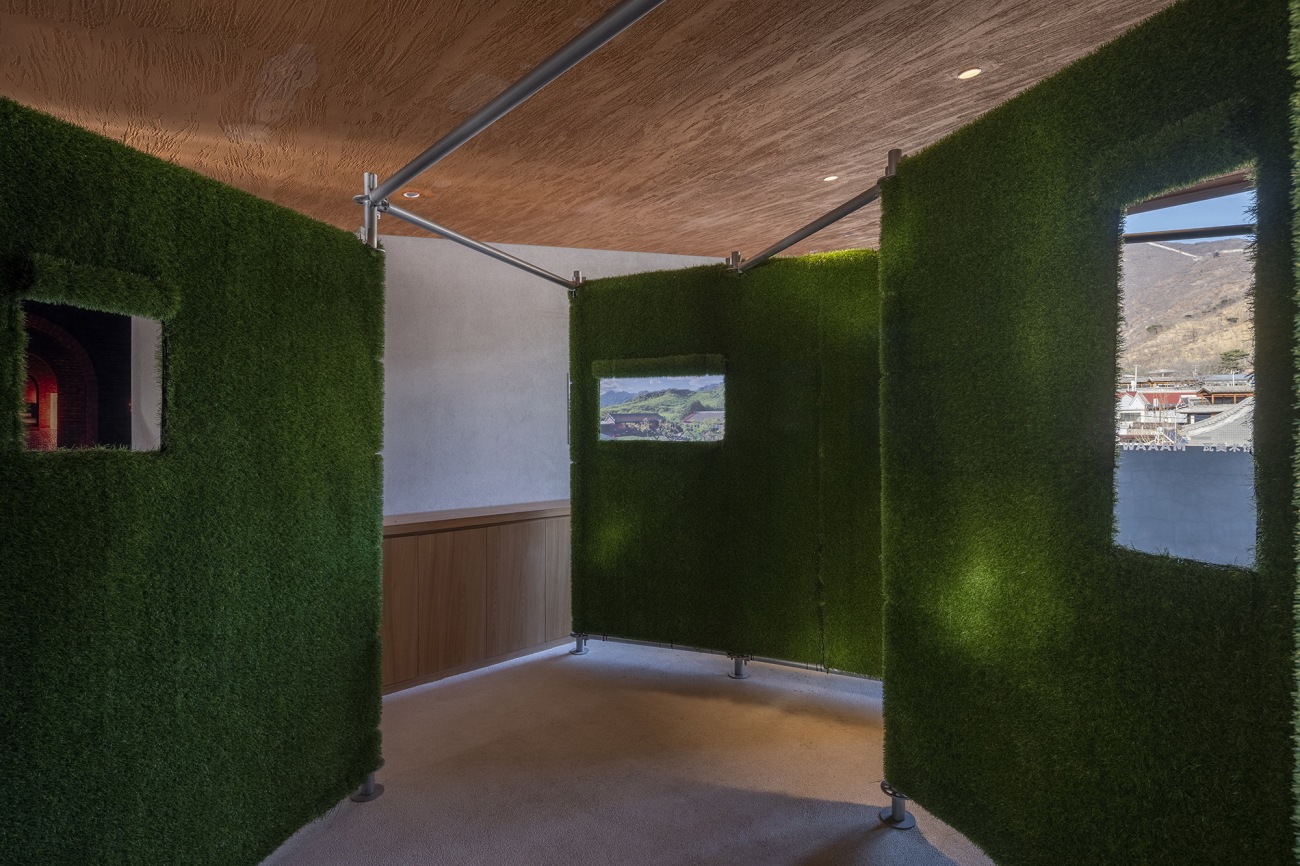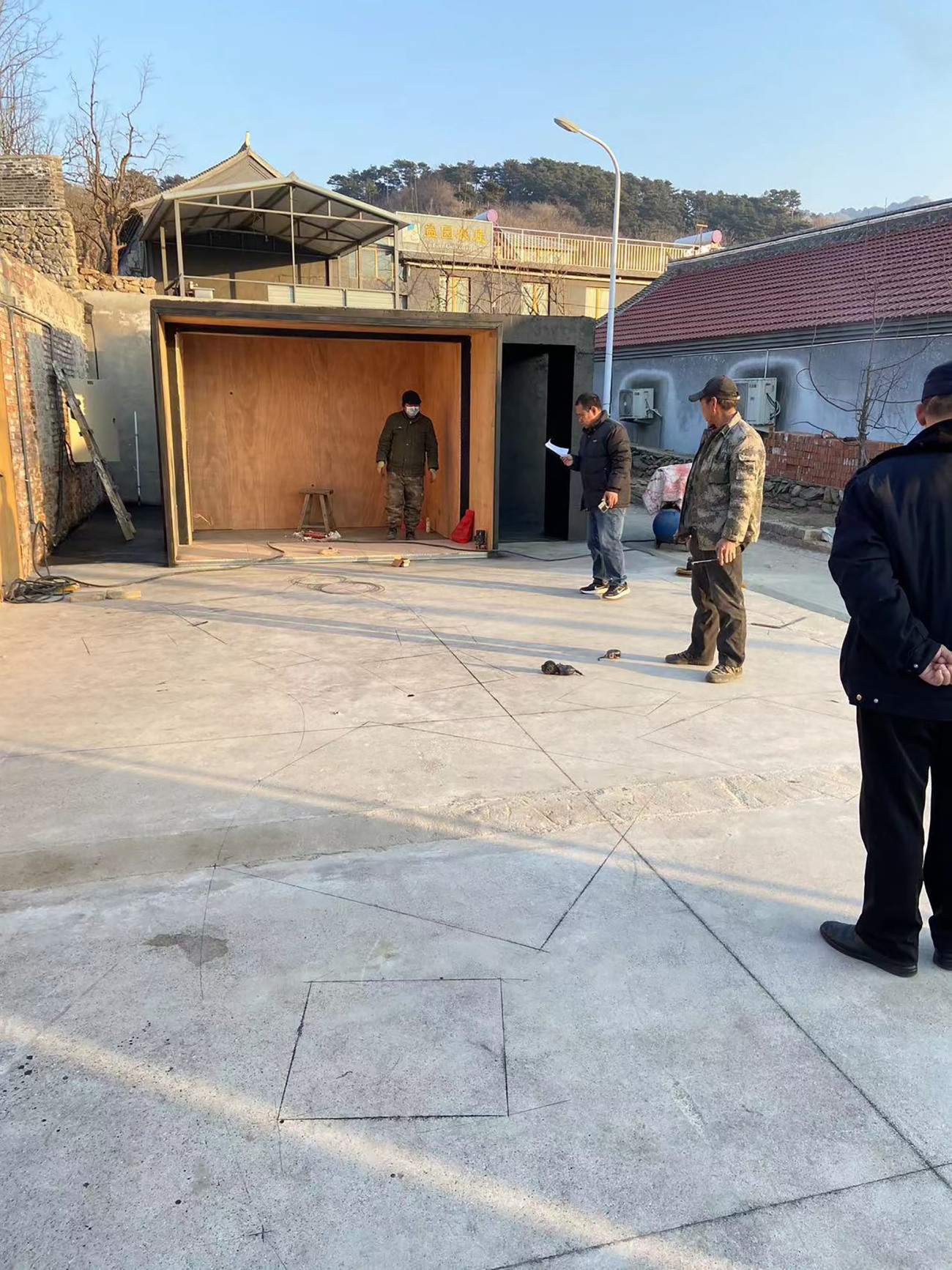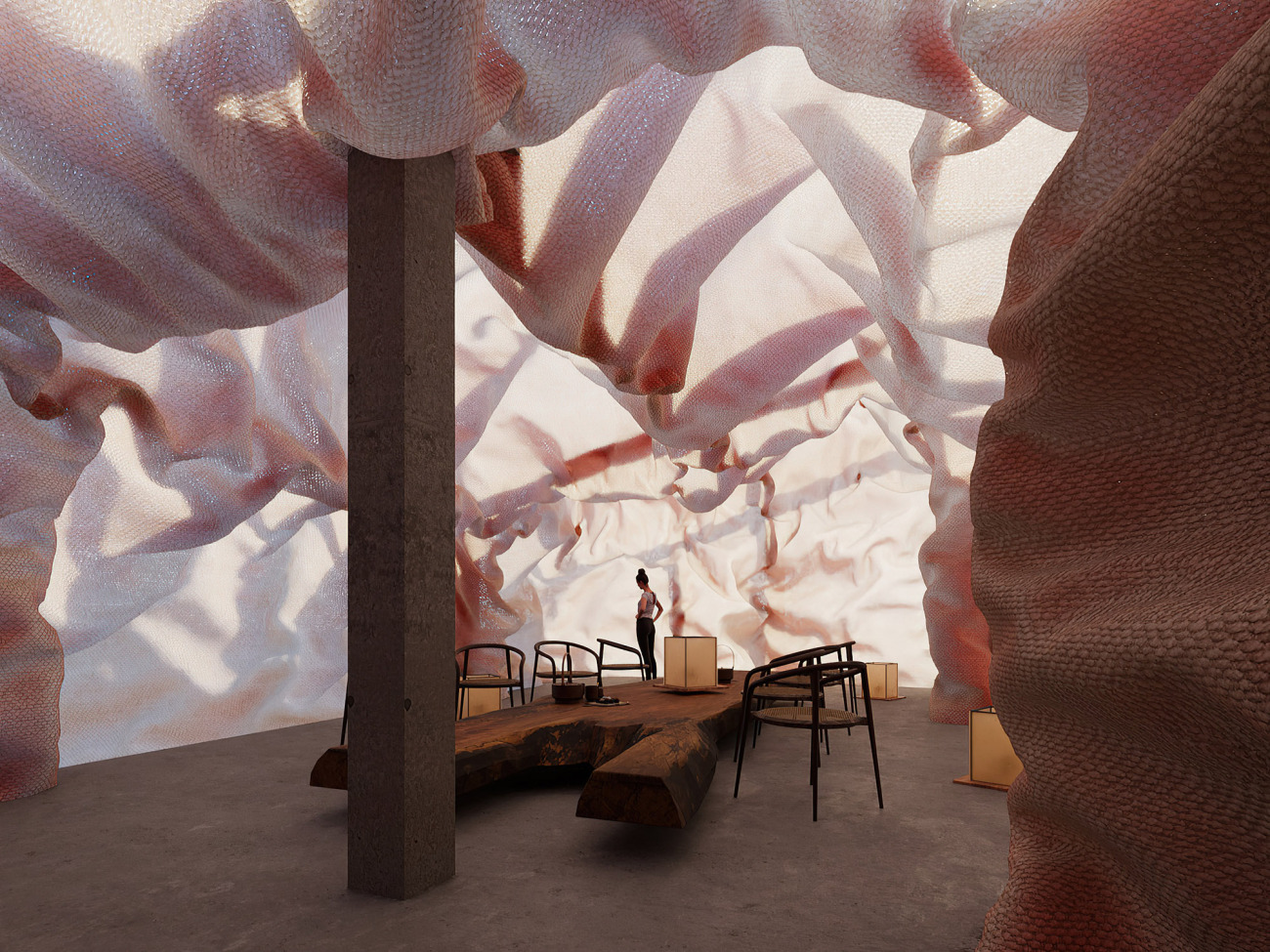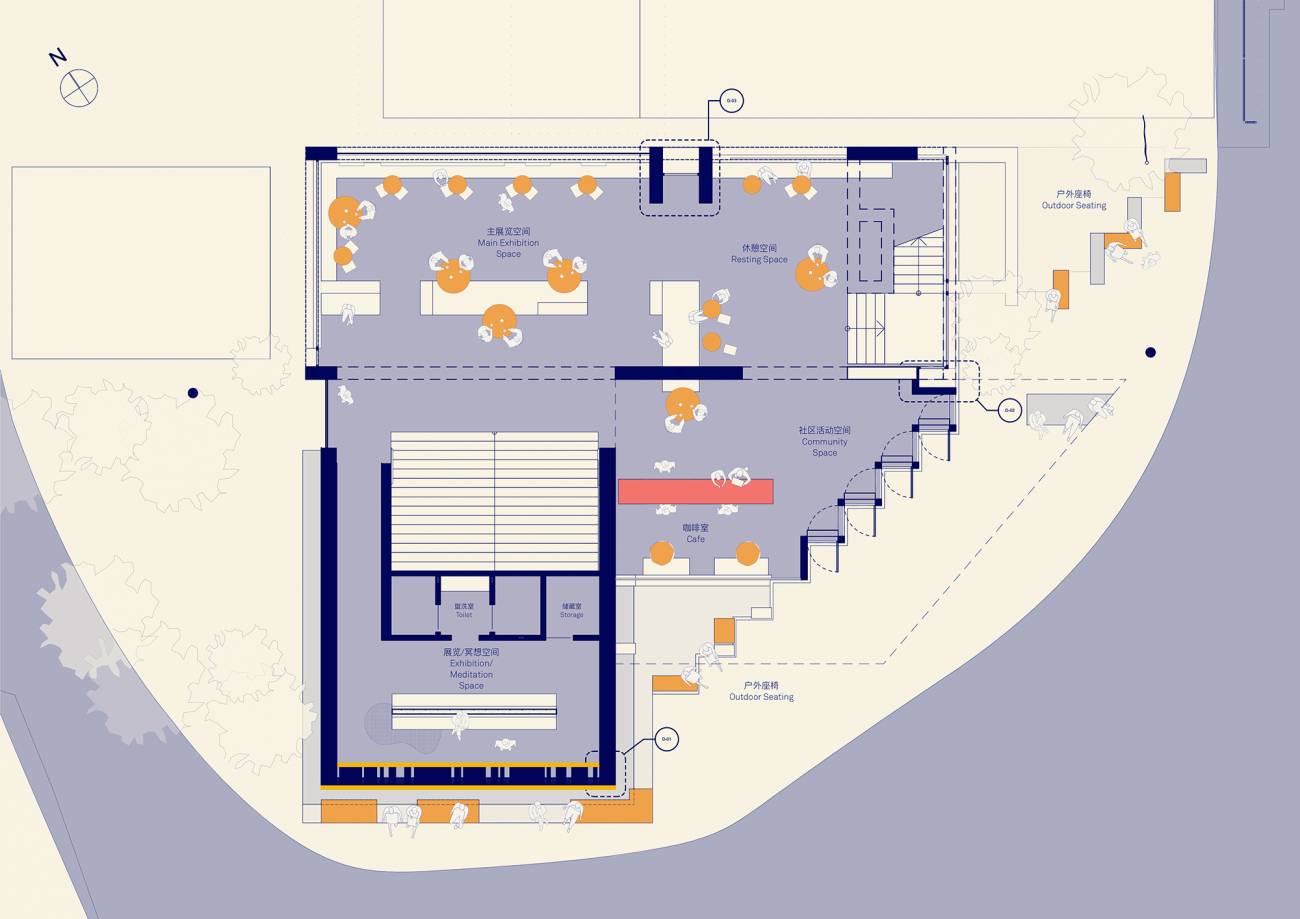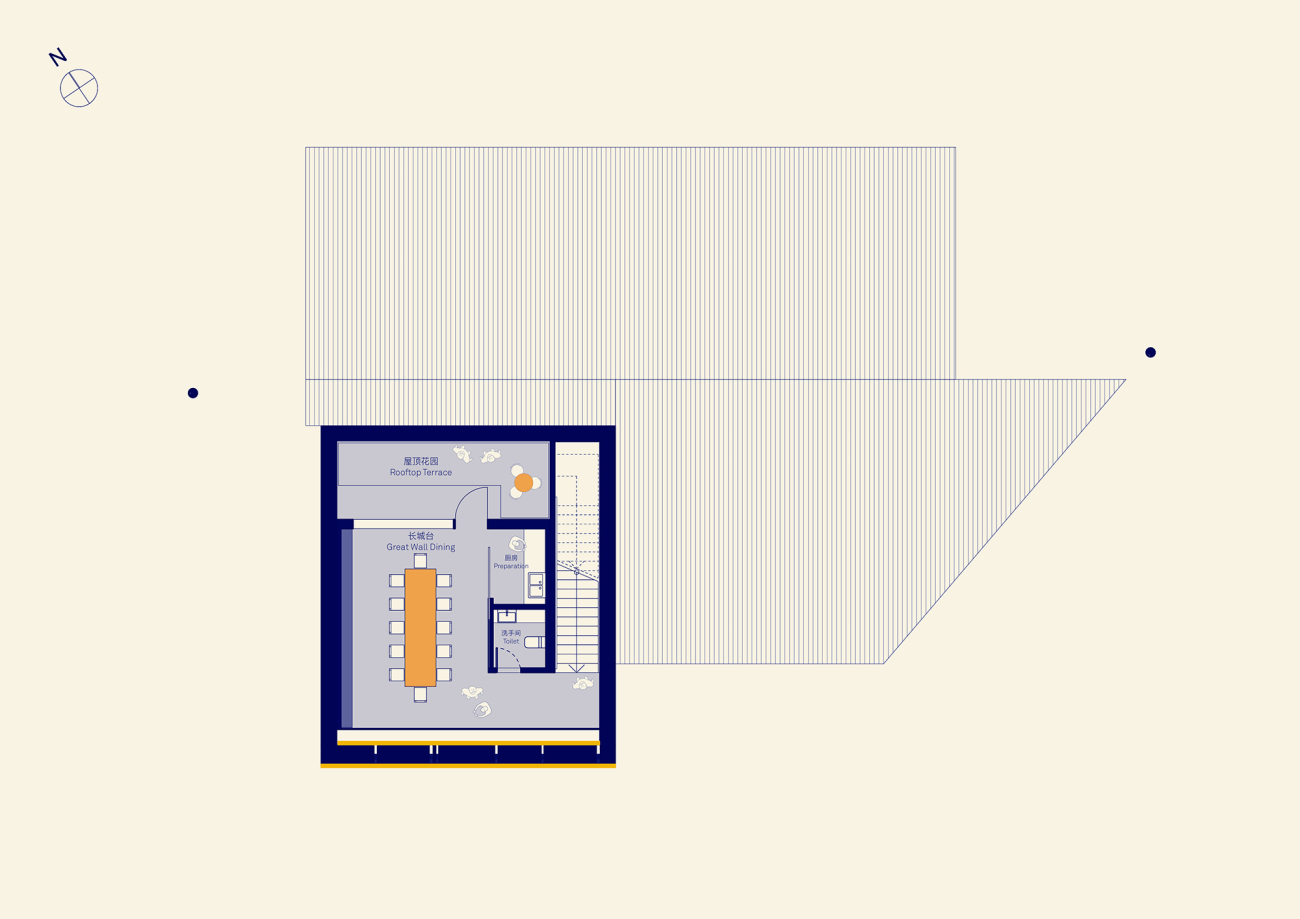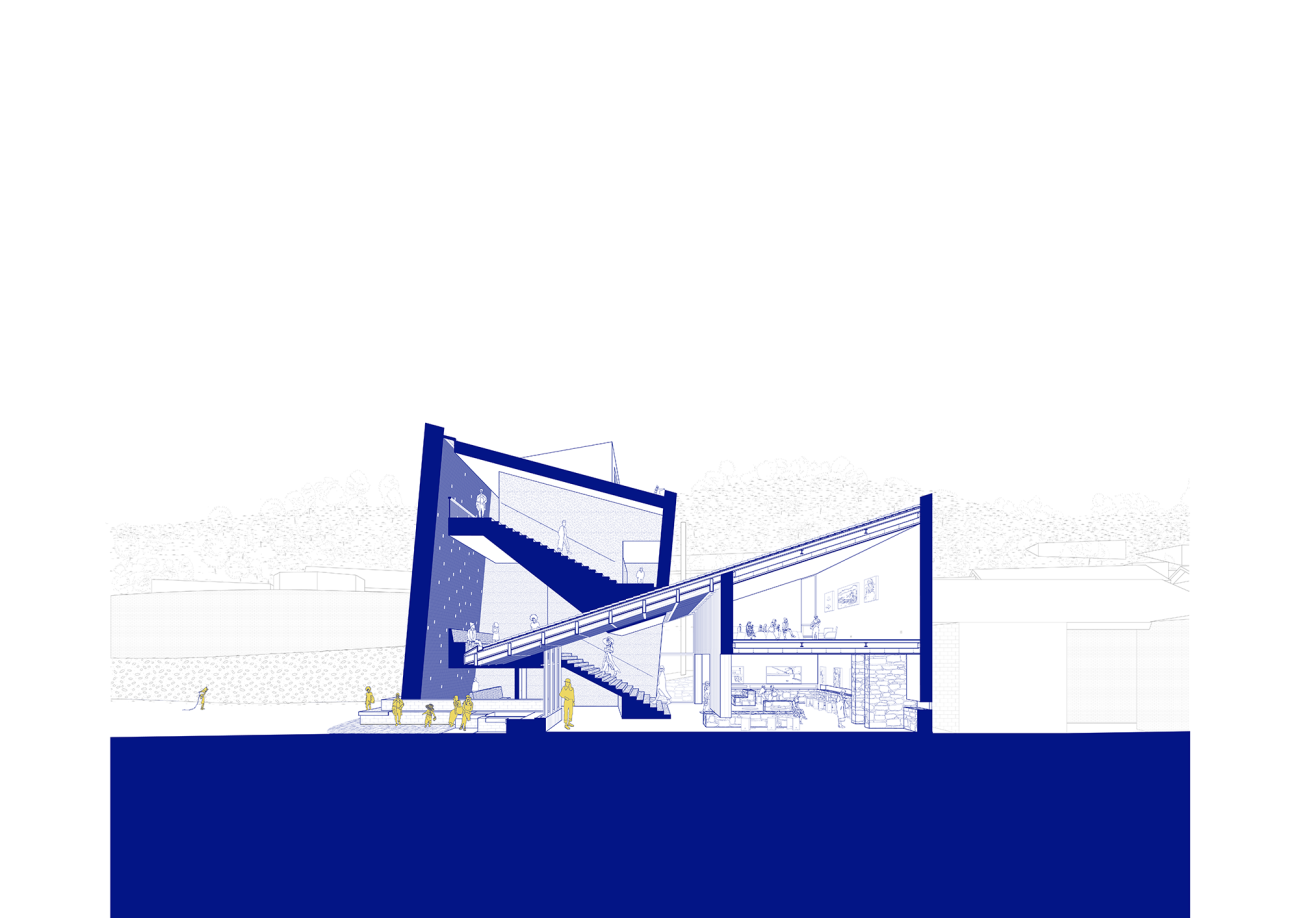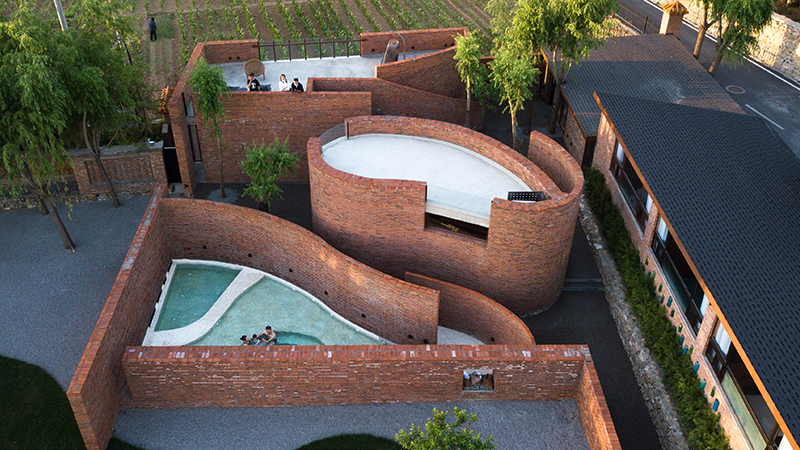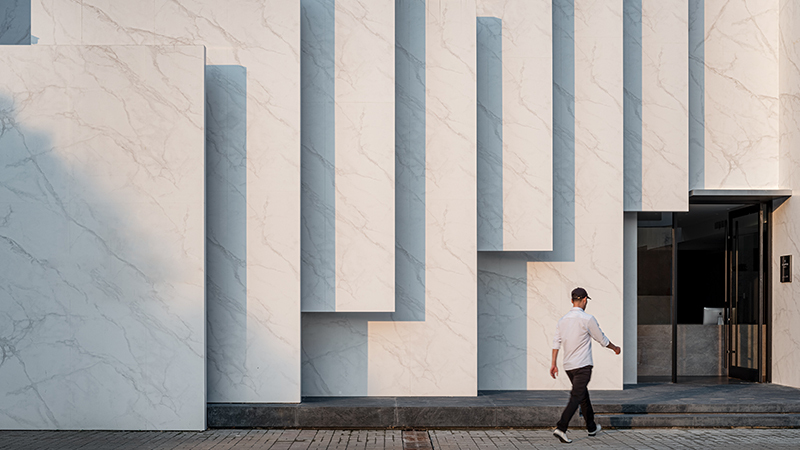文化背景:乡村振兴、乡村建造、和人的介入
Cultural backgrounds: Rural Revitalization, Rural Construction and Human Intervention
现代社会释放了个人与空间的关系,人口不再与土地绑定。然而当地缘不再是血缘的投影、当人不再理所当然地附在土地上,乡土用什么长出人、留住人?城市飞速发展,农村沦为土地和劳动力等生产要素的无私供应者,那些耕地资源不甚丰富的村庄,正如北沟村,唯有疲乏地向外输出青壮年劳动力。振兴乡村无法绕过的就是逆转人又从村到城的单向流动,让人从城到村回流,不论是短暂的消费还是长期的居住、工作。
Modern society has released people from the contract with their land, and the human heart is no longer bound to the earth. When people are no longer attached to the land for granted, villages face the dilemma of what shall it use to grow and retain people.With the rapid development of cities, the countryside has become a selfless supplier of production factors such as land resources and human capital. Those villages that are not rich in arable land, like Beigou Village, can only export young and middle-aged labor to the outside world. This loss of population desertified the land and dilapidated dwellings. What cannot be bypassed in revitalizing the countryside is to reverse this one-way flow of people from the village to the city, allowing people to return from the city to the village, whether it is for short-term consumption or long-term living and working.
在这样的大叙事下,乡村建造不应建⽴在城市建造的既成规则上,也不建立在对原乡文化符号的消费上,而应以社会关系作为⾃我更新的素材,再反过来促进全新社会关系的搭建,将民族血液中流淌的对“归田园居”的渴求转化为切实的变化。本地⼈、外来者、建设的发起者、土地的拥有者、村里的工人、村民、村干部、外来的施工队、游客、来访者、建筑师……北沟经验告诉我们,人与人的交互、群体和群体的碰撞是乡村建设的过程与结果,唯此才有乡土中国复归的可能、陌生人社会中更具⼈情的关系复归的可能和乡村主体性复归的可能。
Confronting a village awaiting both economic and cultural revitalization, architects from the outside, like us, demand an anchor for our practice. Clinging to the narrow path is the default prescription of modern architecture; unfolding in front are numerous symbols and clichés tempting one to pick from. Yet the answer does not reside in built forms. The power of rural construction lies in its ability to bring the workers back and to bring visitors in, thus reversing the one-way flow of people and repopulating the countryside. Construction of new relations and interactions (among locals, outsiders, initiators of construction, owners of land, workers in villages, villagers, village officials, construction teams from outside, tourists, visitors, and architects) is as important as putting up buildings. Beigou's experience tells us that, the interaction between people and the collision among groups are the process and result of rural construction. The manual is in fact the human.
项目目标与展览空间 Target and Exhibition Space
社戏旨在以北沟一系列建筑实践为窗口,将乡村建设背后的人物关系和互动显化,以多旋律并进的展览方式,将人和人之间、群体和群体之间的互动转化为一幕幕场景。不同角色轮番登场,展陈视角不断转化,邀请村民和村子的来访者进行一场角色扮演。
The purpose of Village Opera is to use the series of architectural practices in Beigou Village as a sample to demonstrate the complex relationship and interaction of characters behind rural construction. By curating an exhibition with multiple tones and melodies, interactions among groups (of different background, interests, responsibilities and rights) are transformed into different scenes of display. Characters come up stage, and the perspectives of the exhibits are constantly changing, inviting villagers and visitors for a role-play.
△ 社戏展览大概念 Exhibition BIG CONCEPT
△ 空间短片- Video of neighbourhood concept
展览共分为七个主要空间,其中瓦美术馆六个为戏剧主线,分别是入幕、重唱、谈判、反思、对角和群像,一个北沟新主义场地,为返场彩蛋。
The exhibition is divided into seven main spaces, of which six are the main line of the Play in WAAAM (WA Art. Architecture Museum): Prologue, Ensemble, Negotiation, Soliloquy, Duet and Epilogue, when Encore locates at the plot of "Ambeigoity", where the Experiment of Rural Land-Use has been conducted.
△ 社戏 Village Opera 展览概念 Video of the exhibition concept
△ 社戏展览段落布局 Site layout
入幕空间与村庄联通,是展览的开场客厅。工人、建筑师、村民、开发商、游客…...不同角色间是否有着无法逾越的界限?人们在北沟互相观察和戏仿,最后汇聚在瓦美术馆的屋檐下。
Prologue connects with the central plaza of the village and is the opening living room of the exhibition. Workers, architects, villagers, developers, tourists... Are there insurmountable boundaries between different roles? People observe and imitate each other in Beigou, and finally gather under the eaves of WAAAM.
重唱空间位于老房子原址一层,这里散落着粗糙的毛石基座,展览场景强调考古现场感,内容为三卅-施工、北旮旯和民房改造。旧民房,新建筑,老村民,施工队,他们在北沟新旧交替过程中不断试探彼此的领地。施工队似乎变成了考古队。关于历史和记忆的探讨变得清晰起来。
Ensemble, the first Act, is located on the ground floor, within the foundation of the original farmer's house, upon which WAAAM stands. Rough rubble bases are scattered and the exhibition scene emphasizes this sense of the archaeological presence. The content features San Sa Village–Construction Phase, Beigala Nostalgic Station and the Farmers' House Collective. Old houses, new buildings, old villagers, and construction teams are constantly provoking each other's territory in the process of development of the village. The construction team seems to have become an archaeological team, when the discussions about history and memory emerge.
谈判位于老房子原址二层,这里空间清晰利落,用于展示瓦美术馆项目。不同角色在建设瓦美术馆时的“推杯换盏”,表达了不同立场对建筑本身的定义和干预。
Act II, Negotiation is located on the second floor of the original site. The space is left sharp and sober, on contrary to the multi-media hodgepodge of Ensemble, to display WAAAM as a rural development and an architectural project. The alternation of different roles in the construction process of WAAAM expresses the definition and intervention of different standpoints on building a museum in a village and on the building itself.
反思空间位于琉璃瓦墙下小空间,这里光影充满戏剧张力,展览内容为“三卅-建筑师的反思与独白”。建筑师面对自己内心的独白,二元的分裂被影射在⼀条狭窄的走廊里,拥有设计权利的人该如何使用它并最终与自己和解。
Soliloquy (Act III) is a sound space tucked in a small pocket under the glazed tile wall, where the light and shadow are full of dramatic tension. The exhibition of San Sa Village-Architects' Inner Monologues invites visitors to walk through the narrow corridor of deep self-reflections and debates within, confronting and questioning how those who have the right to design can use it and finally reconcile with themselves.
对角空间由塔楼阶梯画廊开始到三楼露台结束,这里与长城景观连结,主角为瓦厂项目中带入游客视角的建筑师和来此参观被赋予建筑师视角的游客。设计师和游客该如何发现心中的风景?不同视角是否会错过对方的感受?瓦厂设计小心的平衡这种细节,只有远方的长城永远俯瞰这⼀切。
Winding up the tower, a new landmark of the village, Duet (Act IV) starts from the staircase gallery and ends with the "grand view" out the terrace. It's cast features the New Brickyard Retreat – Designer vs. Sightseer; both its content and the way of display expand on the topic of Perspective in designing Scenes in the countryside. How should designers and visitors (both outsiders of the village) uncover the scenery in their minds? Will different perspectives miss/cross each other's feelings? The design of the New Brickyard Retreat carefully balances such details, and only the Great Wall in the distance always overlooks all of this.
尾声空间位于大台阶,展览内容为“群体影像”。所有角色和访客汇聚到这⾥,如同置身在村口的露天电影院,关于北沟的瞬间在屏幕上变了又变,人们自己也拥有了瞬间的英雄主义。
Located on the big steps is the final Epilogue. When all the characters and visitors gather here, it's like being in an open-air cinema at the entrance of the village. The moments of Beigou Village change and change on the screen with its people themselves suddenly have their momentary sense of heroism.
项目延伸:北沟新主义,即兴激活与乡村地块生活实验
Extension: Ambeigoity_Spontaneous Activation and Experiment of Land-Use
于北沟村参与环境革命与乡村实践已7-8年的时间,然而在阶段性的内容都成为现实,落实于实际互动体验时,一些生活与感受的缺失便时常尤为明显。突发的山泥倾泻将老房子砸垮,留下了几十平方米的空地,而疫情的影响又让原本餐饮的空间需求持续降低,给空间的使用目的带来了不确定性。从而给延伸乡村空间的畅想与实验,提供了可能的场地。
At Beigou Village, it has been 7-8 years since our first participation in the projects of environmental revolution and rural revitalization. Yet, when all progressive development has turned into reality and has been implemented in the actual interactive experiences, the lacking of certain particular matters is becoming obvious.
△ 社戏展览总图 Exhibition masterplan
突发的山泥倾泻将老房子砸垮,留下了几十平方米的空地,而疫情的影响又让原本餐饮的空间需求持续降低,给空间的使用目的带来了不确定性。从而给延伸乡村空间的畅想与实验,提供了可能的场地。
A sudden landslide destroyed the old house, leaving dozens of square meters of open space, and the impact of the epidemic has continued to reduce the original functional demand of dining, which has brought uncertainty to the purpose of the space, thus, providing a possible venue for the imagination and experimentation of expanding the rural spatial agenda.
于是,一场即兴的场地探索,作为“社戏,一场乡村建设彩排”的实验性临展,随即开始。这是一场基于对乡村居住者与城市生活者两者融合程度的研究,对于现有北沟村发展体系可否延展的尝试与探讨,同时,也是一种对于未来的刺激与鼓动,但反应与结果未知。
An impromptu site exploration, as an experimental temporary exhibition of "Village Opera, A Rehearsal of Rural Construction," began immediately. This is a research based on the degree of integration between rural residents and urban residents. It is an attempt and discussion on whether the existing development system of Beigou Village can be extended. At the same time, it is also a kind of stimulation for the future, but the response and results remain unknown.
第一阶段 – 以空地与图像的视觉表现方式叙述空地的发展意图,记录反应。
第二阶段 – 建设洗手间此类必须功能以支持建造,结合展览的装置应用,以凸显潜在活动变化与乡村语言能够在传统理解基础上而衍生的突破可能性。
第三阶段 – 在已设定图像及布局基础上,放置室外家具(在最终空间目标的设定框架下),在环境舒适度上给予非常规的挑战与设定,以观察反应现象。
第四阶段 – 将空间功能硬化,使提取出的现象成为保留的空间内容,并将空间定性,向乡村生活的新的一部分生活发展。
Phase 1 – Narrate the development intent of the land with visual representations, and record reactions.
Phase 2 – Building toilets and other necessary infrastructures to support the construction, combined with the installation application of the exhibition, to highlight the potential changes in activities and the breakthrough possibility that rural language can be derived on the basis of traditional understanding.
Phase 3 – On the basis of the set image and layout, place outdoor furniture (under the framework of setting the final space goal), to give challenges and settings in terms of conventional programmatic comfort, and to observe the reactions.
Phase 4 – Solidify the spatial function and make the extracted phenomenon become the reserved space content, to characterize the space and progress to new ways of understanding the rural life.
△ 北沟新主义_1.0 空地 Ambeigoity_1.0 Abandoned land
△ 北沟新主义_2.0 功能用地 Ambeigoity_2.0 Functional Application
△ 北沟新主义_3.0 随机使用与探索 Ambeigoity_3.0 Spontaneous Exploration
△ 北沟新主义_4.0 未实现 Ambeigoity_4.0 Not realized
设想未能实现,并在空间需求上在社会情况的变化下,产生反方向的引导。
The idea failed to be realized.Under the changing social conditions, guidance was given in the opposite direction.
第四阶段的实际情况 – 在无积极回应的情况下,成为瓦美术馆固定展的支持性装置搭建平台,以帮助突出展览的主题表现。
Actual Phase 4 - in the absence of proactive response, it eventually became a supporting installation platform for the exhibition "Village Opera, A Rehearsal of Rural Construction".
第五阶段的实际情况 – 社会情况改变,原本的空间需求急剧增加,则准备恢复原本的空间属性。
Actual Phase 5 - the social situation changes, the original space demand increases sharply, and the original space attribute is to be restored.
乡村的动态进阶性实践演变,体现了乡村实践的节奏与其内容的融合关系。此实验的最终设想或者说假设没有实现,然而起初设定的发展方向与实际反应之间的互动与启示,也许能够给予更加明朗的对于乡村/城市实践方法的理解,帮助乡村生活实践者找到更合适的尺度。这种“干预”,似乎更像是一种“单向实践”所获得的“互动”,这种“互动”可能才是乡村建设的真正启示。
The dynamic and progressive evolution of rural practice reflects the integration of the rhythm of rural practice and its content. The final idea or hypothesis of this experiment has not been realized, but the interaction and enlightenment between the development direction set at the beginning and the actual response may give a more objective understanding of the rural/urban intervention methodologies and help rural life find the most appropriate degree of interaction. This kind of "intervention" seems to be more like an "interaction" obtained by "unidirectional practice," and this "interaction" may be the real inspiration for rural construction.
△ 1F plan
△ 2F plan
△ 3F plan
△ Profile
项目信息
项目名称:社戏
项目地点:北京市怀柔区北沟村
项目设计团队:llLab.叙向建筑设计(www.lllab.net)
总建筑面积:660㎡
占地约:540㎡
其中建筑占地:363㎡
庭院占地:177㎡
项目时间:2022年1月 - 2022年4月30日
项目阶段:展览进行中
项目策展人:严予隽
项目设计团队:魏子煜、左超
项目合伙人:Luis Ricardo、刘涵晓
摄影:金伟琦、llLab.
Project Information
Project name: Village Opera by llLab.
Project Location: Beigou Village, Huairou, Beijing, China
Project Architectural Design: llLab. (www.lllab.net)
Site Area: 540㎡
Total Construction Area: 660㎡
Footprint Area: 363㎡
Landscape Area: 177㎡
Project Timeline: January, 2022 - April, 2022
Project Status: Exhibition on going
Curator: Yujun Yan
Project Team: Ziyu Wei, Chao Zuo
Project Partners: Luis Ricardo, Hanxiao Liu
Photography: Jin Weiqi, llLab.
更新日期:2023-02-16 20:32:24
非常感谢 叙向建筑设计 带来的精彩项目, 查阅更多Appreciations towards llLab for sharing wonderful work on hhlloo. Click to see more works!







